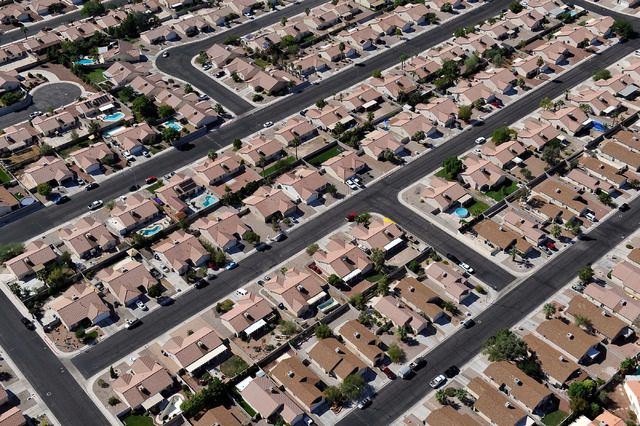Analysts say C grade for Nevada housing is just fine

Nevada’s housing market is about average these days, and observers say that’s just fine.
The state Business and Industry Department’s Housing Stability Index gave the market a C grade for the second quarter, placing it in the middle of the road for performance.
That mark was up from a D+ in the second quarter of 2013.
It wouldn’t be a bad thing for the housing market to hang out in the C range for the foreseeable future, said Brian Gordon, a principal of Applied Analysis and an author of the index.
“If you think about the affordability of the housing market today, the number of people reporting negative equity, pricing dynamics in general and the amount of inventory coming onto the market, we are fairly well-balanced in the big picture,” Gordon said. “Current trend lines would suggest the housing market is more stable than it was one or two years ago.”
The index measures 12 housing indicators, several of which changed noticeably in the second quarter.
Foreclosure volume, or the share of mortgages in the state in foreclosure, dropped to 2.3 percent, down from 4.1 percent in the second quarter of 2013 and a high of 9 percent in 2010. The share of investor purchases was 37.3 percent, down from 54.2 percent a year earlier and nearly 60 percent at its early 2013 apex. And the 6.3 percent mortgage-delinquency rate was down from 9.4 percent a year earlier and a 2010 high of nearly 20 percent.
Gordon called the improvements in market distress “a welcome sign.”
Resale housing availability was relatively flat at 4.7 percent, up from 4.4 percent a year earlier but still below the six months of a healthy market.
One key indicator fell markedly year over year.
The community borrowing ratio, which compares loan activity to job growth, fell to 40.4 percent, down from 43.4 percent and enough to push the ratio’s grade to an F, compared with a C+ a year ago. A normal level would be 46 percent.
Part of the lag is because job growth in the state has surged back into the top three nationally, at 3 percent year over year, and loan volumes just haven’t kept up. Also, the state’s share of investor purchases remains higher than average, and that’s crowding out mortgage-backed buyers, Gordon said. As cash buyers continue to lose market share, the community borrowing metric should stabilize, he said.
The index also showed that 29.4 percent of Nevadans with mortgages owed more than their home was worth in the second quarter, down from 38.5 percent a year earlier and well below a peak of just under 70 percent in early 2011.
Contact reporter Jennifer Robison at jrobison@reviewjournal.com. Follow @J_Robison1 on Twitter.